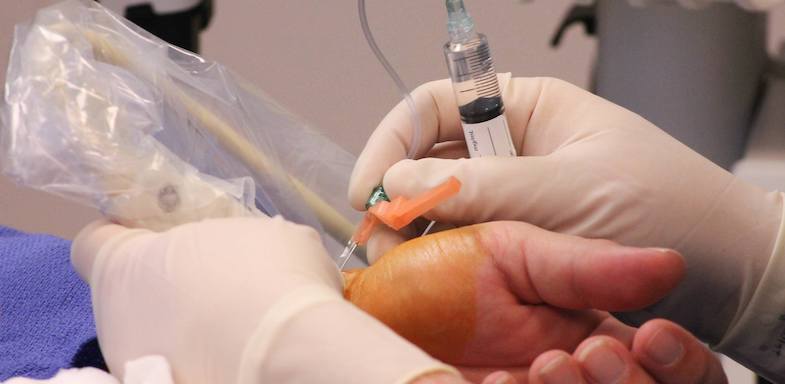Carpal Tunnel Treatment
If you spend your workday at a keyboard or perform repetitive movements with your hands, wrists, and arms, chances are good you know the feeling of fatigue in those areas at the end of the day. Over time, though, that fatigue can change into a more serious condition known as carpal tunnel syndrome. Here’s what you should know.
What is carpal tunnel syndrome?
Carpal tunnel syndrome is a common cause for pain, numbness, and tingling in the hand.
Caused by compression of the median nerve as it travels through the wrist, it affects between four and ten million people in the U.S., with women at least twice as likely to be affected as men.
What causes carpal tunnel syndrome?
The median nerve brings feeling to the palm side of your thumb and first three fingers (not the pinkie). It also helps to control some movements. Any compression of this median nerve can cause, over time, carpal tunnel syndrome.
Common causes and risk factors for this condition include:
- Repetitive strain and prolonged flexion/extension of the wrist, notably from activities such as driving, reading, typing, and holding a telephone
- Wrist fracture and associated swelling
- Pregnancy or oral contraceptive use that leads to swelling in the limbs
- Underlying nerve dysfunctions
Rheumatoid arthritis and diabetes are two conditions that can cause irritation in the tendons of the wrist that compress the median nerve, even without injury or repetitive motions.
Symptoms
Not sure if you’re suffering from this condition? Look for these symptoms.
Pain, numbness, and tingling usually occur on the palm and palmar side of the first three fingers from the thumb. Weakness can occur in the thumb and adjacent fingers.
These symptoms depend on the position of the wrist, but usually occur at night and may radiate up the arm as far as the shoulder.
Other carpal tunnel syndrome symptoms can include:
- Decreased dexterity
- A weak grip
- Atrophy of muscles in the hand
- Feelings of hand swelling
Getting a diagnosis
A diagnosis is based on the symptoms you’re experiencing.
Your doctor may also perform a variety of physical maneuvers or nerve conduction studies to confirm the diagnosis.
7 carpal tunnel syndrome treatments
The goals of carpal tunnel treatment are to reduce pain, numbness, and tingling, and to prevent further loss of motor function. Treatment options are plentiful, but depend on the severity of your symptoms and your lifestyle.
You can treat most mild to moderate cases with a combination of conservative treatments.
In general, these are the at-home carpal tunnel syndrome treatments that can help:
- Minimize contributory factors such as repetitive use and strain
- Use a splint to keep the wrist in a neutral position, when possible
- Limit prolonged extension and flexion
- Stretch hands, wrists, and arms regularly
- Use ergonomic office tools to prevent irritation
Interventional treatments
If these at-home treatments don’t alleviate your symptoms, talk to your doctor about interventional treatments. To start, you can opt for deep, pulsed ultrasound to decrease pain and promote soft tissue healing.
Likewise, you can utilize steroids (orally or injected into the carpal tunnel) to reduce inflammation and compression when conservative treatments are ineffective.
Carpal tunnel syndrome surgery
For symptoms that do not improve with conservative or minimally-invasive therapy within six months, the definitive treatment for moderate or severe carpal tunnel syndrome is surgical decompression of the median nerve. Surgical intervention is generally more effective than conservative treatments, especially for moderate to severe cases.
Carpal tunnel surgery can be performed via open incision or endoscopically. An open release is performed via standard incision under local anesthesia. This gives your doctor the best view but is slower to heal.
An endoscopic release is performed with scopes and surgical tools through one or two small openings and can result in less scar tissue and post-operative pain.
The prognosis for carpal tunnel syndrome surgery is good, although a minority of patients, particularly those with advanced carpal tunnel syndrome, may fail to improve after the procedure.
Additionally, scarring post-surgery can lead to a recurrence of symptoms several months or years later. The most effective carpal tunnel treatment is to prevent it altogether by taking steps to protect your wrists and hands from repetitive motion injury.
